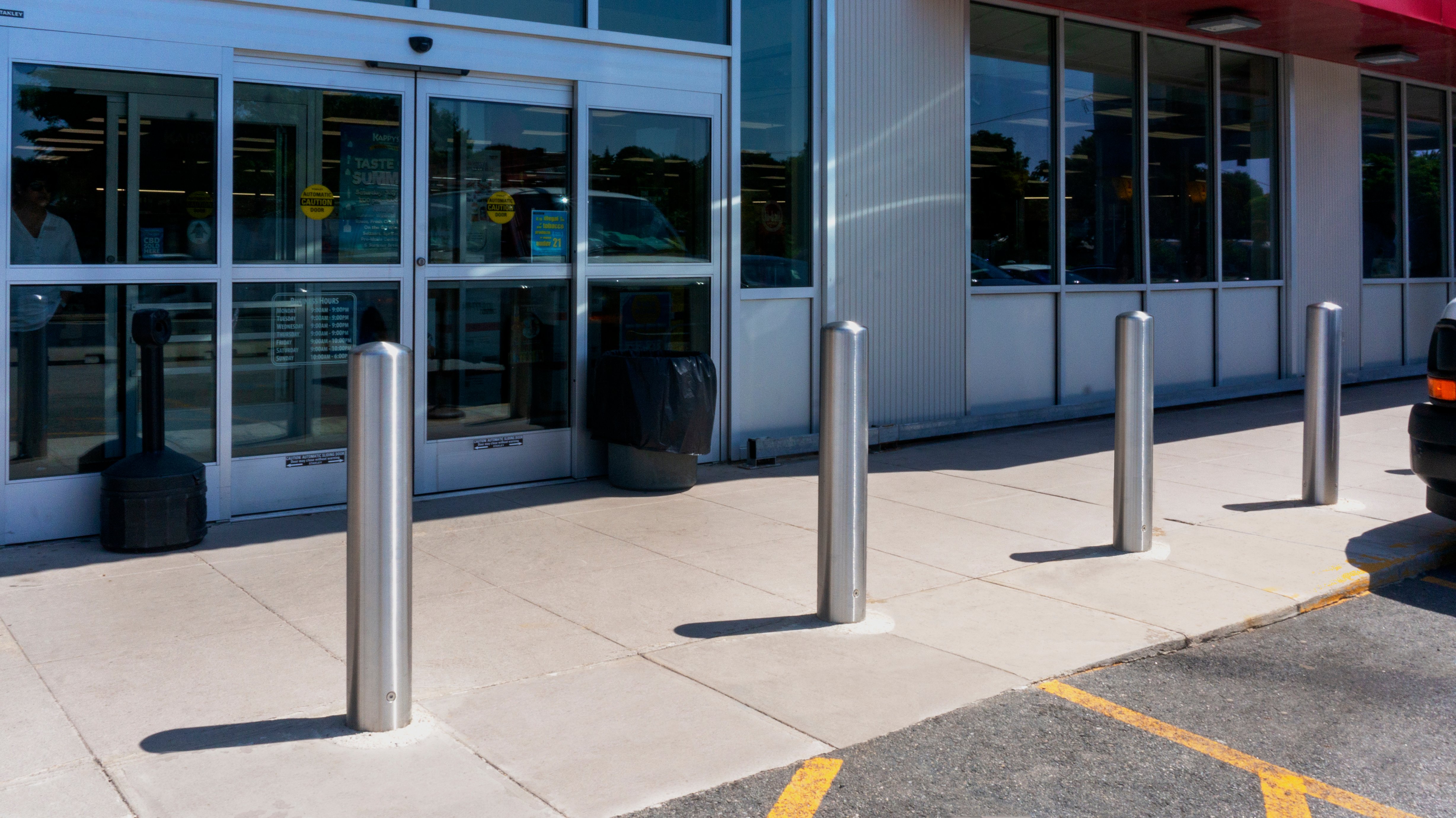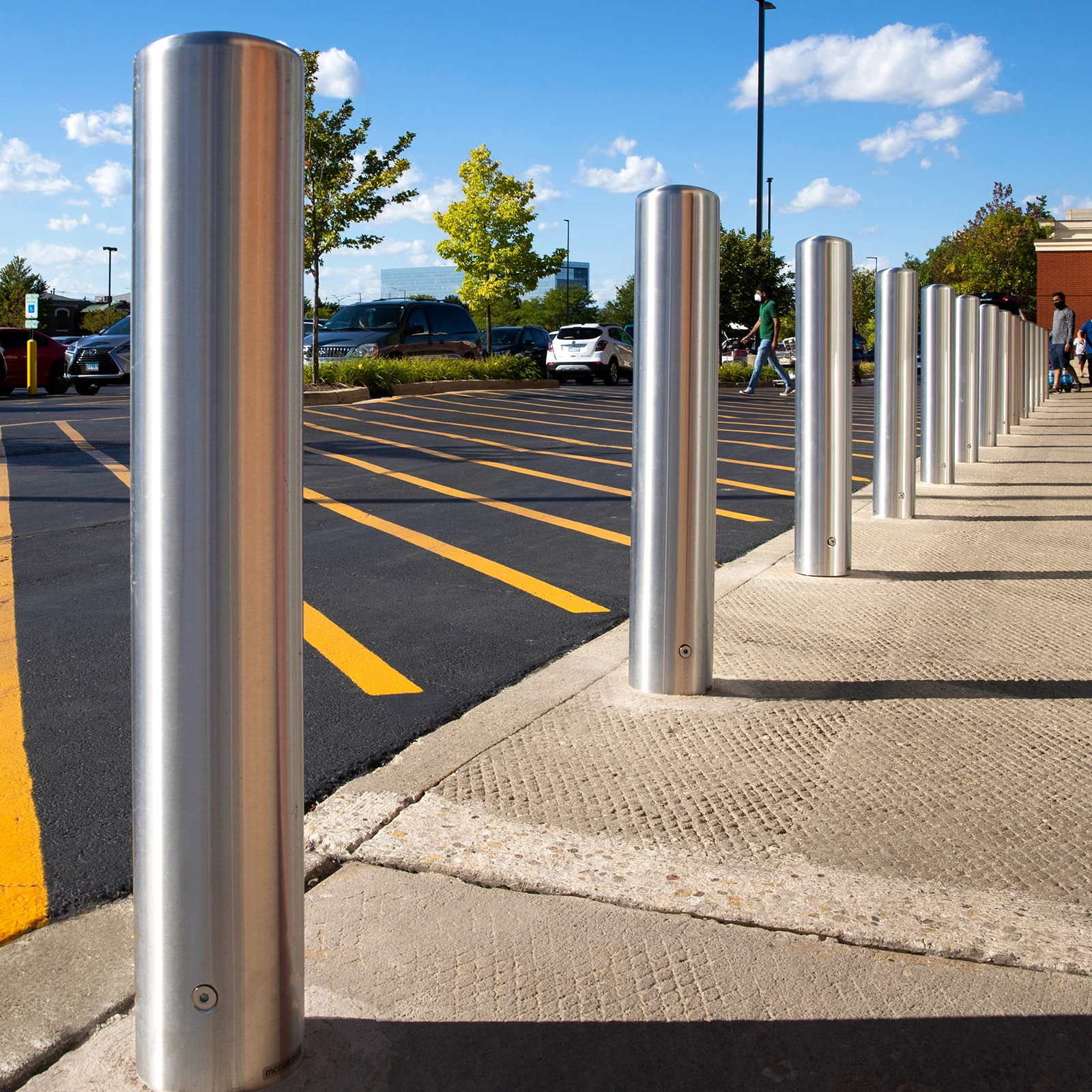When you search for the definition of “bollard”, you’ll get many results. The simple answer, “a short, sturdy vertical post”; a more informative: a post that’s used to protect the perimeter of a store or building; or an even more descriptive: a post or barrier, surrounding retail storefronts, parking lots, and more that offers security and safety to protect patrons.
Any way you slice it, what it comes down to is bollards keep you, your building, and your customers safe.
Though they may seem like a modern-day invention to an age-old problem, the truth is the idea of bollards have been around for over 200 years. According to Wikipedia, “From the 17th and 18th centuries, old cannons were often used as bollards on quaysides to help moor ships along. The cannon would be buried in the ground muzzle-first, leaving the rear end projecting above the ground.. Bollards from the 19th century often inherited a very similar ‘cannon’ shape.”
The use of bollards has evolved, too.
In the early 1800s, Amsterdam residents took a no curb and no yard problem into their own hands. They started installing cast iron bollards in front of their homes and businesses to prevent damage from carriage traffic. This began a trend through all of Amsterdam, as the city started installing bollards to more clearly identify pedestrian walkways.
Then, in the late 1880s as vehicles became more powerful than a horse and buggy, bollards had to adapt. The cast iron posts installed in yards and business fronts were no longer strong enough to protect against the weight of a car.
As the times changed, so did the bollards, which leads us to where we are today. The desire for protection and safety against traffic accidents remains, which means so does the need for bollards.
Types of bollards and what they are used for
Let’s take a look at the many applications bollards are used for today - and how they might apply to your building.
- Pedestrian guides: These bollards are almost purely decorative and are meant as a guide for pedestrians so they know which lanes were designated for them to walk in. They also help to keep traffic out of those spaces.
- Security bollards: To help prevent stores from “smash and grab” burglaries, where a heavy vehicle smashes through a window of a shop and items can be looted in a short period of time, you can install security bollards. While the decorative bollards mentioned above are used to visually identify specific areas, theft protection bollards are designed to prevent vehicle access to a storefront. In more extreme cases, too, they protect against terrorist attacks in high security areas. That’s why they must be stronger and more efficient. (And often not as appealing to the eye - but they make covers for that!)
- Safety bollards: These are used for protecting against lower impact storefront crashes, 60 of which happen every day. These crashes hold you and your store accountable for damages and injuries, and safety bollards, like McCue’s CrashCore can help protect against that.
- Protection for building components: In many cases, bollards can be designed that will specifically be placed near a vulnerable gas or water meter, for example, to protect against accidents.
- Asset protection: Bollards can be installed inside stores to be used on the corners of refrigeration units, ATMs, or retail shelving. The goal is to alert the customers of potential dangers and protect against carts or hand-powered cleaning equipment.
- Bicycle security and protection: These types of bollards serve a double purpose. First, because you have a steel post outside for bikes to hook up to, you’re giving your store an added layer of protection and traffic management. But you’re also attracting cycling customers.
Installing bollards at your store is always a good idea because you can’t put safety on hold. Still unsure which bollard would be right for you and your business?
Visit McCue to learn more about what bollards can do to help protect your stores, or give one of our safety experts a call - they can point you in the right direction.




